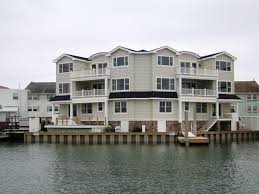Many people have a fantasy of living right on the water. Can you imagine it: you fall asleep and wake up to the sound of the crashing waves or the slow, meditative lap of a lake curling up on the shore? Not only that, but you get to open your doors in the morning with the fresh smell of salt water or grass and you may get to walk to the water’s edge to dip your toes in the water. However, there are a number of things you must do to maintain your waterfront property – or else you could be looking at a lot of damages later on. Here are the top five waterfront property maintenance tips.
![Top 5 Waterfront Property Maintenance Tips Waterfront Property Maintenance Tips Top 5 Waterfront Property Maintenance Tips]() Use biodegradable cleaning products. You will be doing a lot of cleaning in your waterfront property – not only to keep it looking beautiful and pristine, but also to remove layers of dirt and grime that can drift off the beach and onto your home. When you use cleaning products, you want to make sure that the products you use are safe for run off. The last thing you want to do is poison the body of water you live on.
Use biodegradable cleaning products. You will be doing a lot of cleaning in your waterfront property – not only to keep it looking beautiful and pristine, but also to remove layers of dirt and grime that can drift off the beach and onto your home. When you use cleaning products, you want to make sure that the products you use are safe for run off. The last thing you want to do is poison the body of water you live on.- Make sure to empty your septic tanks annually. Draining your septic tank annually will keep your septic system working in perfect, efficient condition. The last thing you want is a septic block that could turn into a leak, which could ultimately damage your home or it could enter the water, which could negatively affect the ecosystem. So, make sure that you have a professional septic system company that can help you drain your septic tank every year. If you visited LakeHomes.com and purchased a vacation property that you only visit every summer, you may be able to get away with draining your septic system every six months.
- Seal your windows and doorframes. When it comes down to it, waterfront homes can be hugely susceptible to water damage, so you want to make sure that you do everything you can to seal your home. For instance, you want to make sure that you add layers of caulking to your windows if you notice cracks. You may also want to add weather-strips to your doors as well – anything to keep the moist outdoor air outside and not inside.
- Pay close attention to your foundational pillars and slabs. If you start to notice any problems with your foundation, you may want to take some preventative measures to level the slabs or to provide more support. While it takes a while for the foundation to start showing signs that it needs to be repaired, you want to keep your eye out anyways.
- Use a dehumidifier. This is especially important in the summer or if your waterfront home is somewhere tropical. Humidity can really start to take its toll on a home’s infrastructure, so you want to use a dehumidifier – preferably one for every floor – to reduce the humidity levels. At the end of the day, a dry waterfront home is a home with a long lifespan.
